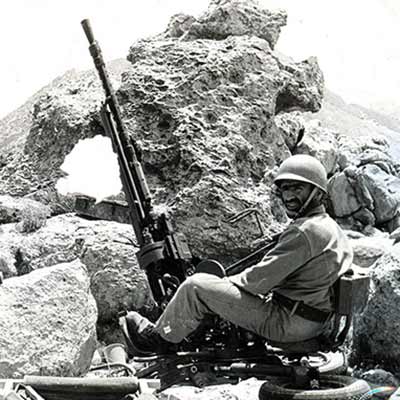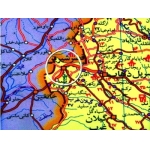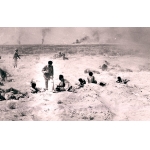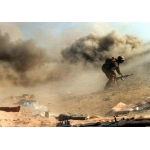Operation Karbala-9
Masuma Sajjadian
319 بازدید
In 1987, the Army of the Islamic Republic of Iran carried out Operation Karbala-9. This operation aimed at recapturing the occupied areas and responding to the evils perpetrated by Iraq in the Persian Gulf, especially in the axes of Sarpol Zahab and Qasr Shirin, Kermanshah Province.[1]
Three days after Operation Karbala-8 in the south (Shalamcheh-Kanal Mahi axis), which the Islamic Revolutionary Guard Corps started on April 8, 1987, the army's ground forces also carried out Operation Karbala-9 in the northeastern region of Qasr Shirin, in the heights of Qarawiz. The forces of the 3rd Brigade of the 81st Armored Division of the army started the attack at 10:00 on April 10, 1987, with the codename ‘Ya Mahdi’. They crossed the channel equipped and attacked the enemy with all kinds of explosive traps and minefields. In less than three hours, the Iranian forces were able to liberate heights 542, 410, 400, and 415, called Babahadi Heights, in the north axis of Sarpol Zahab-Qasr Shirin. Further, Iran was also able to take back the Babahadi Checkpoint, which was occupied by the Iraqi Army for six and a half years. In this operation, 20 kilometers of Iranian territory was liberated, with the Iranian army being deployed two kilometers deep into Iraqi territory, next to the wall of the Qarato River.[2]
The Iraqi army gathered its reserve forces and fought to recapture the lost positions in six stages, each time being forced to retreat with heavy casualties. At 17:00 on the day of the operation, Iraq attempted another ambush with the 1st Battalion of the Commando Brigade of the 2nd Corps. Nevertheless, even with the support of tanks and artillery fire, they were met and repelled with strong resistance and heavy artillery fire from the Iranian forces. In the end, the Iraqi army retreated, leaving more than two hundred dead. The body of the Iraqi battalion commander, Major Saleh Ibrahim Atiyeh, was found among the dead.[3]
During the disposal of the mines, 15 tanks, 35 personnel carriers, 5 vehicles, several ammunition depots and two Iraqi explosives were destroyed.[4]
In its military announcement No. 2635, the Iraqi army admitted to the advance of Iranian forces in this operation.[5]
In addition to liberating the occupied areas, this operation prevented Iraq from bringing in eight new forces in the operational area of Karbala. It also prevented the enemy from transferring support to the forces involved in the east of Basra.[6]
In this operation, the Islamic Republic Army forces destroyed 80 percent of the 1st, 3rd, and 4th battalions of the 2nd Corps Commando Brigade and the 4th Special Forces Battalion of the 3rd Iraqi Brigade. 1800 Iraqi military personnel were killed and wounded, while 55 were captured. Iran also apprehended a large number of mortars, guns, individual weapons and large quantities of ammunition.[7]
[1] Samii, A., Descriptive record of the operations of eight years of holy defense, Tehran: Vice-Chancellor of Propaganda and Publications of Wali Faqih Agency in the Ground Force, 1997, p. 327.
[2] Ibid, Jamshidi, M. H., Yazdanfam, M., Journal of the Iran-Iraq War, Book 47: The Last Efforts in the South, Tehran: Islamic Revolutionary Guard Corps, Holy Defense Documents and Research Center, 2002, pp. 512 and 514.
[3] Jamshidi, M. H., Yazdanfam, M., Journal of the Iran-Iraq War, Book 47, p. 514.
[4] Samii, A., Descriptive record of eight years of holy defense operations, p. 327.
[5] Jamshidi, M. H., Yazdanfam, M., Journal of the Iran-Iraq War, Book 47, p. 514.
[6] Samii, A., Descriptive record of eight years of holy defense operations, p. 328.
[7] Ibid, pp. 328 and 329.






